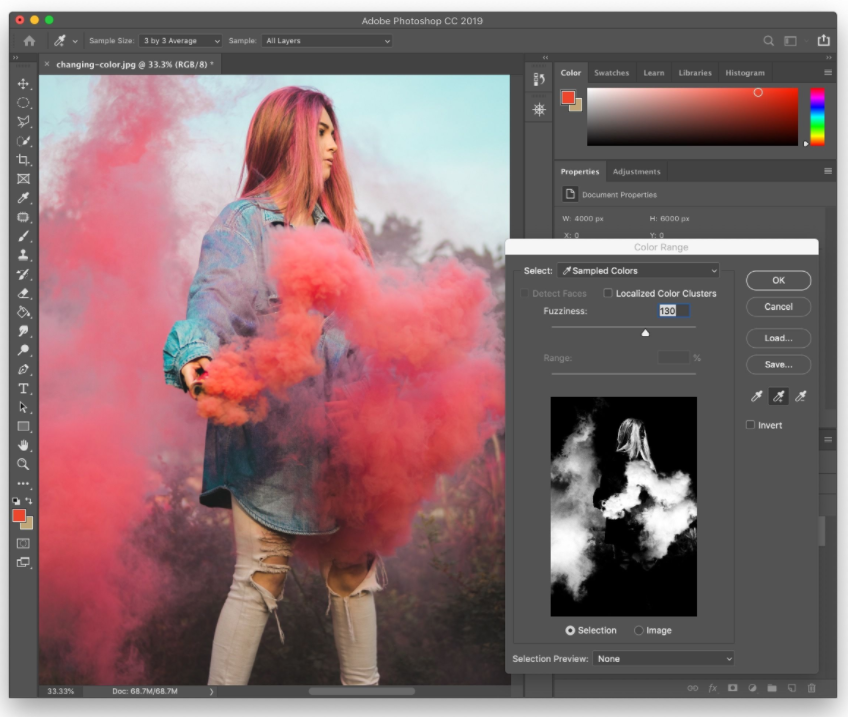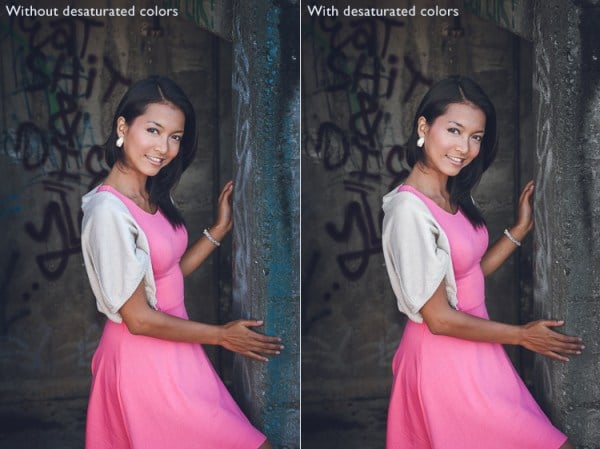You’re looking to delete certain hues from a picture. At times, the appearance of specific hues in a photograph may not appeal to you. You might be interested in altering the lightness or darkness, or possibly the sharpness. Or maybe there are certain irritating colors causing discomfort to your eyes that you wish to eliminate.
In this tutorial, we’ll show you how to use the Curves tool in Adobe Photoshop to adjust the color balance of an original photo. You can quickly and easily remove unwanted colors from an image by changing the curves. We’ll also show you how to desaturate in photoshop to make the colors more pleasing to the eye.
How to Use the Curves Tool to Desaturate the Colors of an Image
Here’s a very simple process for using the Curves tool to change the saturation of an image in photoshop:

- Open your image in Adobe Photoshop CS6 or later by double-clicking its thumbnail. You will see it open as a new document with default settings. The background is white because you are working in “RGB mode.” This means that your original file was saved as RGB Image information.
- Click the Curves icon at the bottom left corner of the Layers panel. A small box appears around the curve control. Drag up or down until you get the desired effect. If you drag too far, you may change the brightness instead of the saturation.
- Save your work when done!
Choose JPEG format and save the file somewhere safe.
How to Use the Hue/Saturation Tool to Desaturate an Entire Image
- Please open the file in Photoshop, add a Hue/Saturation Adjustment Layer by duplicating the background layer, place it above the original layer and apply the changes to the copy layer. Go to the adjustments panel in the bottom right of the screen and click the Effects button (the circular one). Once you click on that, the Hue/Saturation panel will come up.
- Click on the Saturation slider and move the slider to the left until you reach the -30 to -50 level. The hue/saturation slider can be used to edit or change the color of a photograph, create a range of different effects and achieve the level of desaturation that you want.
- You can also reduce the lightness level to further desaturate the image. Move the slider to -8 and see how it looks. Adjust as necessary
Desaturating Individual Colors Using the Color Range Tool
Let’s say you have found a photo of a palm frond that you want to use for a design project. You love the colors of the fronds and the background colors. The only thing you don’t like is the stem. It has a glaring yellow/green color that is too bright. You can use Adobe Photoshop to tone down the glare. Here’s what you do.

- Select the specific area where you would like to recolor. Then select the Color Range. The Color Range dialog box opens.
- Choose one of three options depending on which part of the image you want to modify. For example, if you’re going to make all green plants look less vibrant, choose Green Leaves Only. Or maybe you want to darken the stems without affecting the leaves. In that case, choose Stems Only. Finally, some areas of the image might need no adjustment. These could include sky, water, etc. Choose None.
- Now click OK twice to close both windows. Your selection should now appear highlighted.
- Make sure the foreground color is set to black.
- Click inside the fill window and type 50% gray—press Enter. The selected portion of the picture should turn grey.
- Double-click anywhere outside the selection to exit out of the Fill Window.
- To bring back the original full color version, press Ctrl+Z.
You’ve successfully changed the hue of the plant. But did you notice something else? The other colors became brighter when you reduced the amount of yellow/green in the leaf stem. That’s because the Green channel is being used as the base value. So any changes made to this channel affect everything.
Make sure the G channel is not checked. Click on the Saturation tab. Set the Saturation setting to 0%. This way, the values from each channel remain separate.
If you’re having trouble getting the right results, try playing around with different levels of adjustments. Experimenting with these tools allows you to fine-tune your final product.
Use the Desaturation Presets to Get More Creative
The following preset controls will help you create more interesting effects than those offered by the standard desaturation tool:

- Black and White Creates monochromatic grayscale versions of your photos or turns them into a black and white image.
- Sepia Tone: Adds a warm sepia tint to your pictures.
- Harmful Exposure: Makes your photographs darker.
- Posterize: Turn your photographs into posterized designs.
These presets offer a few different ways to tone down the colors of your images. They are great when working quickly or creating multiple variations of a single image. If you use these tools often, consider adding them to your custom settings panel so they’ll always be available.
From here, you can browse through existing presets and download additional ones. Just search for “Photoshop” under the Filter menu.
You can alternatively use Photoshop’s desaturate shortcut keys Shift + Cmd + U (Mac) and Shift + Ctrl + U (Windows) to desaturate your image.
Selective Desaturation
You can also use selective desaturation to draw focus to a specific area of your shot. Using a layer mask, you desaturate those areas in this approach. A layer mask is a non-destructive method for adjusting particular parts of your photo.
Here are the steps to use selective desaturation in Photoshop:
- Open your image in Photoshop. Right-click and choose “Duplicate Layer” to duplicate the background layer. It will create a new layer with the same image.
- Convert the duplicate layer to a black and white layer by going to the “Image” menu, selecting “Adjustments”, and then choosing “Black & White”.
- Select the brush tool from the toolbar, click soft-edged brush, and choose the color black. Use this tool to paint over the specific part you want in a full-color version.
- Once you have painted over the desired areas, adjust the layer opacity to blend the black and white layer with the original image. To do this, lower the opacity of the black-and-white layer until you achieve the desired amount of color.
- If needed, you can use the eraser tool to remove any mistakes or unwanted desaturation.
- Once you’re happy with the final result, save the image.
Final thoughts: Desaturating is an effective way to create various effects, highlight a specific color, and make your images stand out, and the easiest way to do this is using the desaturate command. Learning how to use desaturation in Photoshop CC, Photoshop CS3 and other photo editing programs or tools is necessary for anyone who wants to edit and utilize images effectively.
It can help improve the overall aesthetic and impact of an image. It also allows the artist to convey specific emotions or moods through their work.
The next time you want to change an image’s overall appearance, consider trying one of these techniques. They are easy to learn and will give you great results every time.
I hope this helps!
